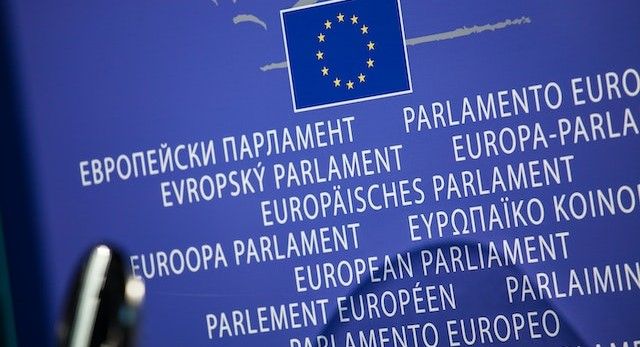The chemical industry in Europe is weighing up the ramifications of a full ban of per- and polyfluoroalkyl substances (PFAS); a class of chemicals dubbed by environmentalists as ‘forever chemicals’.
PFASs are one of the strongest carbon–fluorine bonds in existence. This makes them ideal for use in manufacturing, but also means that they degrade very slowly (if at all). They also bioaccumulate -building up in water systems, soils, and vegetation.
Since the 1950’s, these products have had multiple industrial applications as they provide a combination of oil, grease, and water repellence. For this reason, they have become essential in the manufacture of anything from medical equipment to wind turbines, from non-stick pans to clothing. Their durability and resistance to extreme temperatures and corrosion means that they are used to make coatings, polymers, textiles, packaging, waterproofing, and firefighting foams.

“Between 140,000 and 310,000 tonnes of PFAS chemicals are estimated to have made their way onto European markets in 2020,” Rebecca Trager, reports for Chemistry World. Adding that, “The estimated amount of PFAS that made its way into the European Economic Area over a 30-year period is 49 million tonnes.”
This widespread and varied applications means that they can be found in almost every corner of the world. As Audun Heggelund of the Norwegian Environment Agency made clear when saying that, “You can find PFAS in penguins in the Antarctic, in polar bears in the Arctic, even in rainwater in Tibet.”
“We are unwittingly exposed to PFAS in every aspect of our lives,” tweeted Vivianne Heijnen, the Dutch environment minister. “PFAS are in the soil, in our clothes, even in our bodies. The only way to halt further contamination is to ban PFAS in one go in all of Europe.”
Like all chemicals, it is the quantity and level of exposure that causes toxicity. But, growing scientific evidence of links between PFAS use and health risks such as cancer, high cholesterol, liver damage, weakened immune systems, hormonal dysfunction, and general environmental damage has caused a group of five EU members to act.

It is a move that the European Chemicals Agency (ECHA) has described it as ‘one of the broadest’ restrictions of chemicals in the EU’s history.
Proposed under Reach regulations, the plan has been drafted by the governments of Netherlands, Germany, Denmark, Norway and Sweden and was sent to the ECHA back in January.
If agreed on, the proposal will have a significant impact on the manufacturing and chemical sectors as it would essentially ban an entire class of more than 10,000 chemicals in one single piece of legislation. This would include the import, sale, use, and even production for export of any substance containing, “at least one fully fluorinated methyl (CF3–) or methylene (–CF2–)”, give or take a few exceptions.
The five nations suggesting the ban state that, “The proposal’s formal submission in itself sends a clear signal that companies need to seek alternatives to PFAS.” However in many situations no alternatives are currently available, and in some cases no alternative is ever likely to be possible.
This may make the ban appear unreasonable, however, Trager notes that, “The overall annual health costs from exposure to these compounds in Europe is calculated to be between €52 billion (£46 billion) and €84 billion.”

Naturally, such an extensive piece of legislation will take years to conclude, with a lengthy process of consultation through the ECHA, EU commission, and member states.
This will begin on March 22nd, when the ECHA will open formal consultations and invite input from stakeholders. The ECHA’s scientific committees will then decide if an outright ban is appropriate and/or which products will be exempt. They will then forward their judgement onto the EU Commission and EU member states who could authorise the legislation by the end of 2025.
Any ban would then come into force sometime in either 2026 or 2027. If alternatives are not available or if they have yet to be developed, then PFAS may still be used for up to 12 years, following the ECHA’s scientific committee recommendations.
Opinion is starkly divided on the benefits and drawbacks of such a blanket prohibition.
“We have studied PFAS health effects during the last 15 years,” says Phillipe Grandjean, an environmental health professor at Harvard University states, “and every time we looked at something new, we found additional adverse effects.”
Will Dichtel, an organic chemist who studies PFAS at Northwestern University, agrees, stating that an outright ban is, “an excellent development for humankind’s need to dramatically curtail the use of PFAS to only the most essential cases”.
Some academics, such as Jamie DeWitt, an associate professor of pharmacology and toxicology at East Carolina University, believe that a full embargo is perhaps the only logical response, as restricting the use of each individual chemical product would simply allow chemical companies to substitute each toxic PFAS with a new, similarly dangerous alternative PFAS.
There are also fears where a non-economically viable alternative is not available that the chemical industry will wrangle exemptions for ‘essential uses’. Their lawyers will also argue that in some products the PFAS do not leach into the environment in significant quantities.

In resistance to these proposals, the main producers of PFAS’s have formed a lobby subgroup (called FPP4EU) as part of the European chemical makers' association CEFIC. It is a cluster of 14 major industrial chemical producers including the industry’s biggest names (and wealthiest lobby groups), such as Solvay, 3m, BASF, Bayer, Merck KGaA, and Teflon brand owner Chemours.
“FPP4EU’s main concern is that the restriction proposal may still lead to disruptions of certain value chains and eventually eliminate some key applications,” said Jonathan Crozier, FPP4EU's Advocacy and Communications Chairman. Adding that there would be a “huge impact” on the production, cost, and use of many daily products. For this reason, the group was planning to ask for numerous exceptions during the public consultation process, particularly where alternatives are not available.
It is a position supported by the American Chemical Council, whose director of product communications, Erich Shea, outlined the council’s position when stating that, “ACC supports strong, science-based regulations for PFAS chemistries, but the overly broad regulatory approach proposed in the European Union disregards individual chemistries’ unique properties, profiles, and uses and is neither scientifically accurate nor appropriate.”
Other industry insiders want better clarification over the legislative wording. Nicolas Robin director of Plastics Europe’s Fluoropolymers Group, for example, believes that fluoropolymers have been labelled as PFAS based only on their molecular structure. However, their environmental and toxicological characteristics differ significantly from those of most other lower molecular weight chemicals.
“Our position is that the restriction proposal should differentiate between fluoropolymers and other PFAS,” he said in a recent interview with Chemistry World. “Reflecting their safe use and importance in key applications and exempting fluoropolymers from unjustified regulatory action.”

Naturally, the argument comes down to one of economics versus public health.
On the one hand, some in the chemical industry believe that these ‘overly broad restrictions’ will lead to job losses, restrict chemical company growth, and limit consumer access to modern chemical products.
While others believe that chemical safety must be the priority, even if it means that some everyday products are no longer available. As Dichtel concludes, a “near-total PFAS phase-out [is] the only long-term solution to end their negative health and environmental effects.”
For now, that is for the EU Commission, EU member states, and lawyers to decide.
Photo credit: Polina Tankilevitch on Pexels, Karen Laårk Boshoff, Lerone Pieters, Anna Shvets, Angel Bena, & Huy Phan